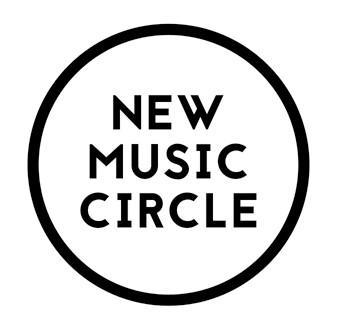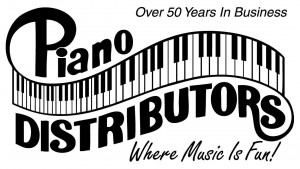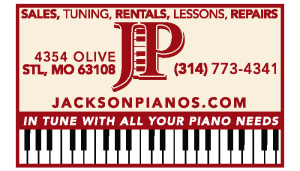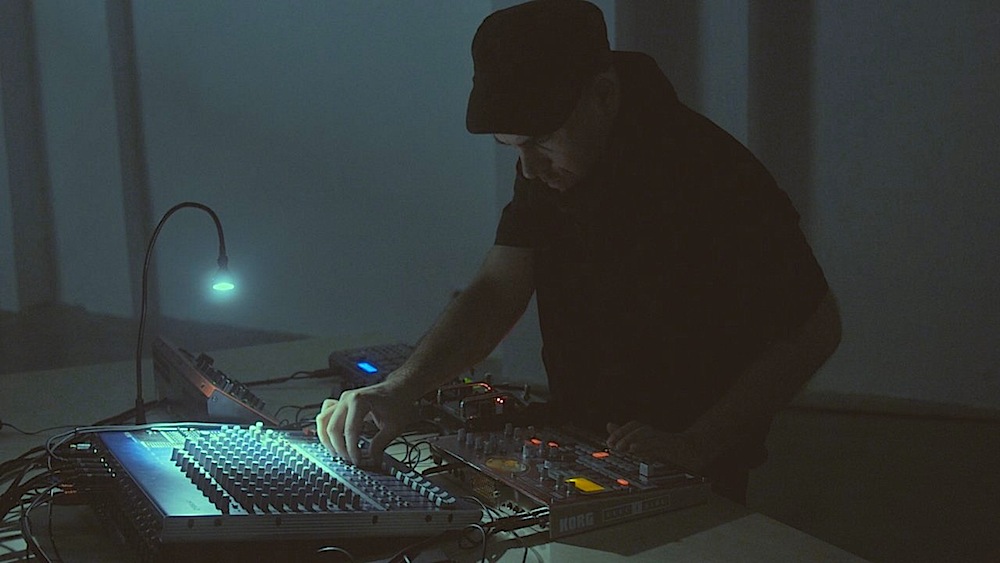| Saturday January 17th, 2015 Concert 7:30PM |
560 Music Center 560 Trinity Ave, 63130 (map) |
|
| Co-sponsored by the Department of Music at Washington University | ||
|
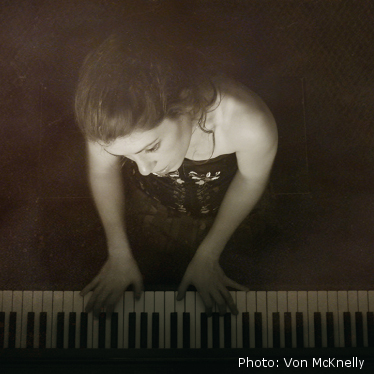 |
|
| Johanna Ballou is a young American pianist who has been enthralling American and European audiences with her magnetic stage presence and dynamic interpretations.She completed her studies at the Royal Welsh College of Music and Drama in the UK and has studied with Daniel Martyn Lewis, Rolf Hind, Seth Carlin, William Phemister, Vera Parkin, and members of Grammy Award-winning ensemble Eighth Blackbird. After her acclaimed Welsh premier of Gyorgy Ligeti’s Piano Concerto, she toured alongside members of the Royal Philharmonic Orchestra and London Sinfonietta for the contemporary chamber opera company Music Theatre Wales.
She has collaborated with Diversions, the National Dance Company of Wales, and worked in music for Welsh independent film, television, theater, and art installation projects. Since returning to the states in 2009, she has continued her performance career in both solo and collaborative piano. She works closely with composers in the performance of new music, and performs educational programs for children throughout Missouri and Illinois. Ballou’s January concert will include selections that employ a variety of modern classical approaches. The program will include
PLUS! Special Audience Participation Project: Johanna Ballou will lead a special performance of Frederic Rzewski’s Les Moutons de Panurge (1969). The audience may join this piece in two ways: 1) All audience members are encouraged to bring ANY small instrument to the performance. No rehearsal necessary. Some small percussion instruments will be available on a first come, first served basis. 2) You may also play along with the main melody of the composition, in which case there will be one required rehearsal on Saturday, January 17th, from 12pm-2pm at the Tavern of Fine Arts (313 Belt Ave.). The rehearsal will be led by Tracy Andreotti (musician, composer, and NMC board member). The score may be obtained from imslp.org for free. Anyone involved in the melody portion of the composition will receive a free admission to the evening concert at the 560 Music Center. For further information about this participation please contact our Program Coordinator at nmc.jeremy@gmail.com. |
||
 radwidmer
radwidmer
New Music Circle and KDHX present ROSCOE MITCHELL and CRAIG TABORN (duo)
| Friday, December 5th, 2014 concert 7:30 PM, doors 7:00PM |
The Stage at KDHX 3524 Washington Ave. 63103 (map) |
|
 |
| An internationally renowned musician, composer and innovator, Roscoe Mitchell began his distinguished career in the spirited 1960s of Chicago. In Mitchell’s own opinion, his work is a product of his heritage in the fertile art communities of the AACM (Association for Advancement of Creative Musicians) and The Art Ensemble of Chicago. Both organizations spawned large networks of musicians and inspired radical approaches to performance and musical thought, thus informing his own practice for over five decades. Primarily known for his saxophone playing, Mitchell’s multi-instrumental palette also includes various flutes, woodwinds and a broad range of percussion.Mitchell’s monumental 1966 album, Sound, introduced new ways of freely improvising and composing and has long been cited as an essential building block of the “free-jazz” vernacular. Now at the age 73, Mitchell has recorded works on over 83 albums and has written over 250 compositions. Throughout his composed works Mitchell expresses ideas that embrace a broad span of musics from energetic free jazz to traditional music methodologies to complex compositions for chamber groups. Longstanding collaborations have continued with a coterie of diverse musicians: Muhal Richard Abrams, Anthony Braxton, Lester Bowie and Pauline Oliveros. Mitchell has been named Darius Milhaud Chair of Composition at Mills College in Oakland, California, where he currently lives and works.NYC pianist and ECM recording artist, Craig Taborn, has remained a ubiquitous presence on the jazz scene for the past two decades, performing with young jazz musicians and seasoned veterans as well as experimental rock and techno artists. His pianistic approach alludes to the explorations of Bill Evans, Keith Jarrett, and Cecil Taylor and expands further upon these models through his alternate use of Spartan subtlety and dense, hypnotic chord structuring. With regard to his performance sensibilities, Taborn explains that this takes shape by “listening to the really subtle details of instrumental sound, because you don’t just have to rest on notes and rhythms. You can rest on overtones and undertones and other nuances of sound to draw from. When you listen to silence, it’s really rich with possibility, and we start from that place.” At any given time his ongoing band/collaboration-list is over twenty names, which now include Tim Berne, Lotte Anker, Gerald Cleaver, William Parker and Vijay Iyer.
Please note that tickets for this show are $25 (regular) and $15 (student/struggling music supporter). Special Free Artist Talks!On Thursday DEC 4 at 7:30PM, NMC will sponsor a free talk and Q&A with Roscoe Mitchell at the Tavern of Fine Arts. The talk will be hosted by Dennis Owsley (host of KWMU’s Jazz Unlimited) and Paul Steinbeck of Washington University. More details here. On Friday DEC 5 at 2:00 PM, Roscoe Mitchell will present a guest lecture at Washington University to discuss the evolution of one of his best-known compositions. Mitchell’s talk “NONAAH: From Solo to Full Orchestra” will take place in Wash U’s Music Classroom Building, Room 102, 6500 Forsyth Blvd at Wallace Dr. The event is free and open to the public. Special thanks to Piano Distributors and Jackson Pianos |
|
Rashad Becker Interview
While known to many for his keen vinyl-mastering skills, honored by the hundreds of releases which now grace his name, Rashad Becker has created a music of his own that sounds quite unlike anything else. Becker’s sole 2013 release, Traditional Music of Notional Species Vol. 1 (PAN), is a foray into the realization of possibilities and “fictions” technically capable by live electronic means, and thus creates temporary, sonic environments that are uncanny and compelling.
How different is the approach to your live performances from your recorded output? Do you hope to create something different in a performance context?
Naturally recorded music follows different rules of narrative and tension than music that is performed live. It also bonds with people’s biographies in different ways, the usage is simply entirely different. Although my pieces are conceived in the studio, I usually play them live for a while before i sit down to record them. I know my own attention span is bigger when I play my pieces live so I always run into trouble when breaking them down for a recorded format, as I like short pieces…..and if there was no one keeping me from endlessly cropping, my pieces would probably all be under 2 minutes!
What were some formative music experiences for you growing up in Germany?
Well, I grew up with a lot of weird and peculiar music around me as it was Germany at the beginning of the 80s…there was quite a lot of surprise, weird humour, peculiar rhythms, colors, and progressions. Only a few of these groups had international recognition while the scene was huge in Germany. Besides that, the early days of British industrial culture were very intriguing to me, and of course punk and hardcore in it’s most dilletantic and least macho forms. Though I am not sure though how much actual influence my musical socialization has on the music I play today, I think non-musical and even non-sonic influences might be even stronger, social memory…to the day still I find the most overwhelming musical experiences rather in traditional music from Asia, Asia minor, Africa and South America.
Speaking generally, has Berlin been a good place for you to discover and make art? Is there anything specific about your environment that facilities or inspires you creatively?
Berlin has been a good and rich diaspora for anyone following a special interest in the past, with things changing from 2000 on. Berlin always had special conditions, the division being one of them, the lack of grip and supervision on the eastern part after the wall came down being another one. What set Berlin aside from Paris and London for example was that people would go there to actually live there and not just to be there for a while to tick a box in their curriculum. That made for a lot of social and cultural longevity, people properly conspiring over long terms and the places/clubs/galleries etc being real long term forums for a certain culture and a certain group of people. On top of that, you really did not need to move money around to be able to live there. My first flat in East Berlin was about $3.00 for rent a month, the second one a steep 400% increase to about $12.00…so you would just engage in commercial activities like labour every now and then when money ran out, so people had time for more important things than moving money around.
You’ve mentioned that your music is inspired by fiction…
I have always liked the writers of the era that was called ‘visionary poetry’ or ‘hermetic literature’ in German and has been referred to as ‘German Gothic’ in other languages. Also I am fond of the early 20th century German expressionists – but, more than actually being inspired by fiction, writing music is a compensation for my lack of endurance to follow up with my rather big ambition to write words….
With your interest in fiction and traditional musics and their instruments, on the flipside, I was wondering what electronic instruments offer to you …what are the challenges and what are the rewards of using them?
Synthesizers have a stronger fictional potential and expansion than natural instruments, they do not necessarily carry as much weight/history/patina as natural instruments do and hence allow for a more novelty language. Basically every sound you synthesize has the potential to bring the whole idiosyncrasy of an actual new instrument to the table. In that regard it is precious to me that my music is purely synthetic, as it gives me a lot of room to create my own kind of fiction. In analogy to animated movies, I was always puzzled why so much of their vocabulary is actually an emulation of non-animated movies in terms of cinematography etc and why so little examples beyond completely abstract and artistic movies actually elaborate on the potential and freedom the animated format provides. In that sense to me synthetic music provides a different potential for sonic and musical fiction than music written and arranged for natural instruments.
NMC Interview with Eli Keszler
A percussionist, sound-artist and composer, Eli Keszler’s M.O. involves the dense and relentless movement of sound. His drumming approach is quick, with a vested interest in small, microtonal points of attack – little snippets of “bings” and “bangs” that go by quickly and aspire, in Eli’s words, to “create something that moves so fast that it is slow”.
On the other hand, his travel schedule is anything but slow, with recent performance collaborations involving the likes of David Grubbs (curated by none other than STL ex-pat, Paul C Ha), Tony Conrad and Joe McPhee.
Your performances involve not only drumming, but also include resonating piano string installations, graphic scores, prepared guitar, and compositions for large groups – though I was curious if you see yourself as primarily a percussionist?
It’s interesting, because I feel most comfortable playing the drums, but at this point I wouldn’t consider myself to be primarily a drummer. All along since I became interested in writing and putting together my own music and art, I saw the drums as a tool amongst many others.
What is it specifically that draws to to percussion?
I’ve been playing the drums since I was 7 and the same things draw me to the instrument now that did then: I like the duality between the simplicity and complexity of the instrument, there is no instrument more basic and which through this primal quality reveals its endless construction and nuance. Unlike other instruments that go through technological shifts, the drums fundamentally in role and function really haven’t.
Your music juxtaposes long-form and deeply resonant sounds against your drumming, which itself is moves rapidly and is almost microscopic in it’s detail. How do you view the intersections of these disparate sounds? As a listener, this juxtapose you create is the core of your music, and it has a heavy emotional quality to it all.
Thanks! I am definitely interested in the psychological aspects of music and perception and often times I feel like my drumming, art and music operate like my mind which tends to run very slow or very fast and at many directions at once – instead of trying to deny this aspect of my mind or for that matter the way of the world and nature at large I have tried to go with it, and explore this multiplicity. I became interested in music which deals with close tunings and slow unfolding resonances and structures and have needed to solve the problem of pairing the drums and achieving this effect, which is essentially staccato, with this attempt to create the illusion of sustain, while keeping everything acoustic and raw. Essentially I’m working from an impossible premise – to create something that moves so fast that it is slow.
You have collaborated with several other artists NMC has presented in the past few years, Keith Fullerton Whitman, Joe McPhee and Tony Conrad…
All of these people you mentioned are not only great musicians and artists but great people as well. Keith Fullerton Whitman and I have a long time friendship going back to Boston where I grew up – he is very analytical and sees music through the lens of his encyclopedic knowledge of records and electronic music. Tony Conrad is someone who I admire for his vision and ability to merge both music and visual art into something that delves into an internal dialogue with himself over his long career, as well as with political discourse and models of music and society at large — and Joe McPhee is one of the most powerful musicians I’ve ever played with… the harder you push him the stronger he gets, and it seems limitless.
Could you tell us a little about your recent collaboration with David Grubbs (of Gastr Del Sol) at MIT? While I I know you’ve worked with artists of varying mediums, this is the only context I’ve heard of you working with poetry and language.
The project at MIT List Center which is up till the beginning of November was the first time for many things. I’ve never dealt with text or language in any projects in fact, though it’s something I’ve become increasingly interested in finding my relationship to. David contributed this very interesting long form poem which was chopped into small fragments and drawn on corners of the gallery. I built and designed 7 modular boxes which housed over 100 mechanical devices and small transducers, which were projecting fragments of David Grubbs text through acoustic objects – which the legibility of were mangled by these materials.
Your recent releases have been on the Berlin-based label, PAN, a label which produces visually stunning record sleeves and has an amazingly diverse roster that includes dance artists like Heatsick and Lee Gamble, as well as avant-garde pioneers like Evan Parker and Trevor Wishart…
I love PAN and what (label head) Bill Kouligas creates by curating such a span of musical styles and approaches under the umbrella of the label, and his awareness of how the visual components and design can add something important to the experience of putting on a CD or LP. I appreciate Bill’s vision and his ability to think critically about what it means to run a label today with no nostalgia or romanticism. He really pushes everyone the label to produce in a way that’s true to us, which is a very rare thing.
ELI KESZLER / RASHAD BECKER (solo performances)
Presented by New Music Circle and The Luminary
| Saturday, November 8, 2014 concert 7:30 PM, doors 7:00PM |
The Luminary 2701 Cherokee St. 63118 (map) |
|
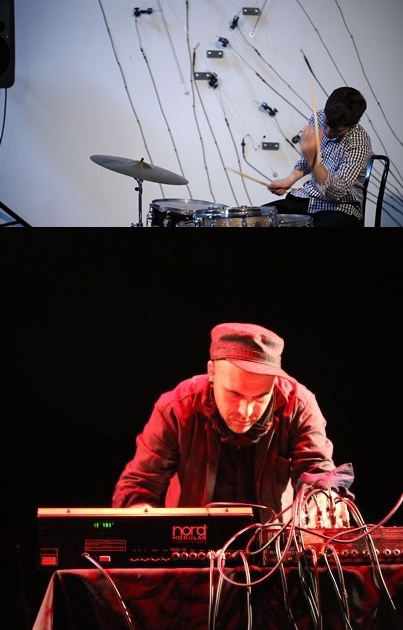 |
| NYC based drummer and sound artist, Eli Keszler, engages in a frictional push-and-pull of percussive sound through instrumental means which are both traditional and experimental. His oeuvre is multi-faceted, consisting of musical scores informed by his print making/drawing practices as well as his construction of resonating piano wire installations (most recently an installation on the Manhattan Bridge commissioned by NPR Radio). His hyper-percussive improvisations are ripe with detailed and pointillistic attacks that build momentum to form frenzied sonic clusters, drawing inspiration from the spontaneity of Han Bennik’s percussion work as well as the harmonic density of Colin Nancorrow’s compositions. With full length albums on the vinyl-art label PAN and the legendary avant-garde jazz label ESP-Disk, Keszler’s releases have received “album of the year” awards from the Boston Globe and Wire Magazine. After studying composition with Anthony Coleman and Ran Blake, Eli Keslzer toured extensively, performing both solo as well as in collaboration with such diverse artists as Christian Wolff, Phill Niblock, Tony Conrad, Joe McPhee, Jandek, Roscoe Mitchell and Keith Fullerton Whitman.Berlin electronic musician, Rashad Becker, utilizes real-time synthesis and sampling techniques that set into motion intricate sonic worlds that recall the complexities of human speech and various exotic aural phenomena, and warrant comparisons to the detailed sonics of pioneers like Tod Dockstader, and the GRM school of electronic music. Oscillating pitches conjoin, multiply and dissolve in unlikely configurations, creating a complex ecosystem of sound. Also, Becker’s work as a vinyl cutting and mastering engineer at Berlin’s Dubplates Mastering Studio (where he has overseen thousands of mastering jobs) has endowed him with a unique insider’s perspective on the practice and aesthetics of modern day electronic music and production.
After years of performing, Becker’s sole release came out on PAN in 2013, aptly titled Traditional Musics of Notional Species. Pitchfork described Becker’s LP as an album that “breathes in pointed, often hilarious detail. [Becker’s] sounds actually sound like things.” Artist Residency (Nov 6th – 8th) If you are interested in attending any of these talks please contact nmc.jeremy@gmail.com. Thursday, November 6th: Friday, November 7th: Saturday, November 8th: |
|
